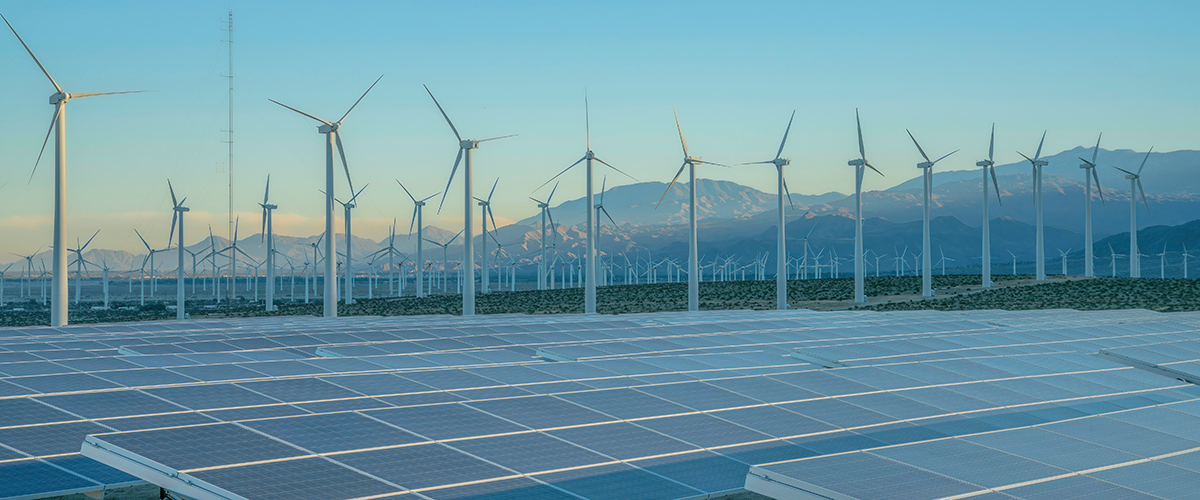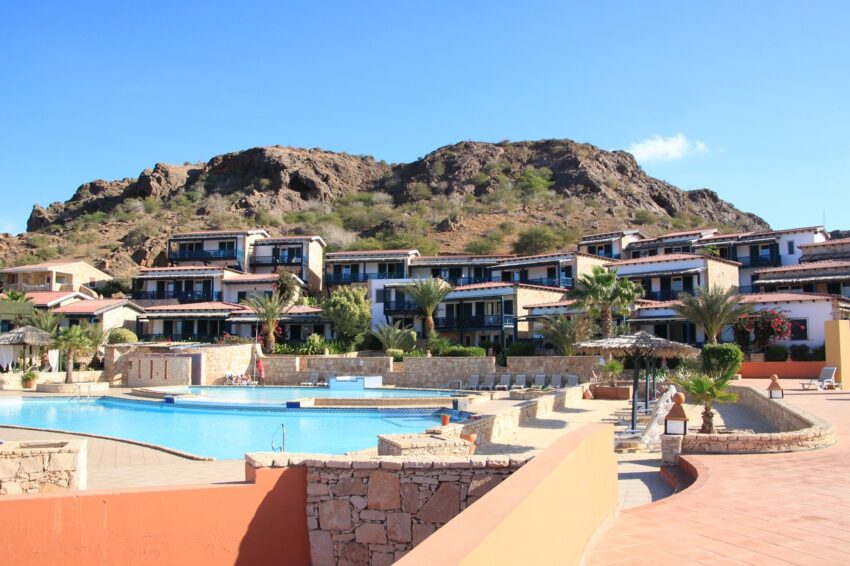Cabo Verde, an archipelago of 10 volcanic islands off West Africa, has limited but varied natural resources. Its main assets are stunning beaches, rich marine life, and strong renewable energy potential.
The islands, made of igneous rock, have volcanic formations dating back 8–20 million years. Major minerals include basalt, limestone, pozzolana, kaolin, and gypsum.
Pozzolana is essential for cement, while kaolin is mostly exported to the U.S. The 4,033 km² land hosts 518 plant taxa, with 145 native species essential for fuel and erosion control. Renewable energy, mainly wind and solar, is expanding.
Cabo Verde aims for 50% renewable energy by 2030. The marine sector supports a strong fishing industry, with annual catches hitting 14 million kg by 2014. Tourism, driven by natural beauty, brought in over 818,000 visitors annually before the pandemic.
Cabo Verde’s Natural Resources And Their Location
These are natural resources that have been discovered in Cabo Verde, and their locations:
| Natural Resources | Locations |
|---|---|
| Basalt | Found in volcanic regions like Fogo and Santiago. |
| Pozzolana | Extracted primarily on Santo Antão, São Nicolau, and Santiago. |
| Kaolin | Found in different locations; most reserves are exported to the United States. |
| Gypsum | Located on Maio and other arid islands. |
| Limestone | Found in arid regions like Maio and Boa Vista. |
| Salt Flats | Located on Sal and Maio islands. |
| Arable Land | Limited to five islands, including Santiago, Santo Antão, São Nicolau, Fogo, and Brava. |
| Wind Energy Potential | Available across all islands, with notable development on Sal and Santiago. |
| Solar Energy Potential | High potential across all islands due to abundant sunlight. |
| Marine Resources | The surrounding waters of all islands support fisheries and marine biodiversity. |
Discoveries Of Cabo Verde’s Natural Resources
It all began in 1456 when Portuguese and Genoese navigators, including António de Noli and Diogo Gomes, first set foot on the uninhabited islands.
Under the command of Prince Henry the Navigator, they were captivated by the barren yet promising volcanic area. The islands they discovered, São Cristóvão (Boa Vista), Lhana (Sal), São Jacob (Santiago), São Filipe (Fogo), and Maias (Maio), were rich in vegetation, teeming with birds, and surrounded by abundant fish.
In 1462, Ribeira Grande on Santiago Island became the first permanent European settlement in the tropics to begin human interaction with Cabo Verde’s natural environment.
As settlers arrived, they cultivated crops suited to the volcanic soil. By 1506, sugarcane, figs, grapes, and melons were introduced from mainland Portugal. Later accounts from 1545 mention oranges, lemons, pomegranates, and coconuts.
By the end of the century, cotton, bananas, beans, pumpkins, millet, and sorghum became part of local agriculture. These new crops transformed Cabo Verde into a hub for subsistence farming and trade.
In the late 18th century, João da Silva Feijó studied Cabo Verde’s biodiversity during his “Philosophical Journeys” under Portuguese patronage.
Between 1783 and 1789, he cataloged hundreds of species, both native and exotic, that held economic value. His research discovered over 50 species essential for fuelwood, erosion control, and agriculture.
The 19th century brought geological surveys that revealed Cabo Verde’s volcanic origins. Scientists determined that Sal and Maio formed about 40–50 million years ago during the Eocene era, while western islands like São Nicolau emerged later in the Miocene period.
Basalt was seen as the dominant volcanic rock across the archipelago. In the early 20th century, pozzolana was found on Santo Antão, São Nicolau, and Santiago. This volcanic ash became essential for cement production locally and abroad.
Kaolin deposits were also discovered and later exported to the United States for use in ceramics and paper manufacturing. The most recent discovery occurred in 2014 during Fogo Island’s volcanic eruption.
Viability Of Cabo Verde’s Natural Resources
As a small island nation, the country faces challenges due to geographical isolation, limited resources, and climate change.
1. Water
Water scarcity is one of Cabo Verde’s biggest challenges. The islands receive minimal rainfall, and freshwater resources are scarce.
To fight this, desalination plants supply over 80% of the country’s potable water. However, these plants rely on imported fossil fuels, leading to high costs and environmental concerns.
2. Arable Land
Only 10% of Cabo Verde’s land is suitable for farming. Poor soil quality and frequent droughts make agriculture difficult.
Farmers use traditional methods and drought-resistant crops like legumes to maintain production. Soil conservation efforts continue, but water shortages and climate change limit long-term agricultural viability.
3. Renewable Energy
Cabo Verde has untapped potential in solar and wind energy. The government aims for 54% renewable energy penetration by 2030 and 100% by 2040.
Solar power makes up 80% of this potential, while wind contributes 12%. Investments in renewable energy have already reduced reliance on fossil fuels.
4. Marine Resources
Cabo Verde’s Exclusive Economic Zone offers rich marine resources. Fisheries are essential for food security and the economy. However, overfishing and weak infrastructure pose threats.
Aquaculture has potential but requires investment in technology and training. The blue economy is emerging as a sustainable growth sector.
5. Minerals
The country has limited but economically viable mineral resources. Pozzolana, used in cement production, and kaolin, exported for industrial use. Extraction techniques are improving, but these minerals alone are not enough to drive substantial economic growth.
6. Impact Of Climate Change
Climate change worsens resource challenges. Rising temperatures increase aridity, which has made water scarcity and agricultural struggles worse. Ocean warming affects fish stocks and threatens biodiversity and fisheries.
READ ALSO: Benin’s Natural Resources: Locations, Discoveries, Viability, Export Potential, And Economic Impact
Export Potential Of Cabo Verde’s Resources
Cabo Verde may be a small island nation, but it has key resources that drive international trade. Despite limited natural resources, the country has built opportunities in several sectors.
1. Fisheries And Marine Resources
Cabo Verde’s Exclusive Economic Zone (EEZ) has strong potential for fisheries exports. Annual fish catches increased from 10 million kg in previous years to over 20 million kg in 2023.
Coastal pelagic like mackerel (Decapterus macarelus and D. punctatus) and oceanic species such as albacore tuna (Thunnus albacares) are key exports.
The fishing industry also supports the national fish canning sector, with 12 million kg processed in 2013 and over 20 million kg in 2023 for both local use and export.
2. Mineral Resources
Several minerals play a part in Cabo Verde’s exports. Pozzolana, a volcanic rock used in cement production, is extracted locally and exported to neighboring countries.
The nation has substantial kaolin reserves, mainly exported to the United States for industries like porcelain, paper, paint, and rubber manufacturing. Basalt, once exported to African nations like Gambia, is valued in construction and sculpture-making.
3. Agricultural Products
With limited arable land, Cabo Verde has still managed to grow its agricultural exports. Coffee production has seen major increases. Selecting and valuing traditional crop varieties also enhances export potential.
4. Renewable Energy
Cabo Verde is pushing for 54% renewable energy penetration by 2030. This opens the door for exporting renewable energy technologies and expertise in the future.
5. Tourism-Related Services
Tourism significantly boosts foreign exchange earnings. Stunning beaches and natural parks, like those on São Nicolau and Fogo islands, draw visitors. Marine and coastal eco-tourism is growing rapidly. Sport fishing and diving generate around 14 million CVE in annual gross revenue.
Economic Impact Of Cabo Verde’s Resources
Fisheries, tourism, renewable energy, and agriculture contribute to the country’s employment, trade, and economic stability.
1. Fisheries
The fishing industry is essential to Cabo Verde’s economy, providing food security and jobs. Fisheries account for 80% of the protein intake in local communities.
More than 5,000 people work directly in the sector, with thousands more involved in processing and distribution. In 2023, fish exports contributed around 6% of the GDP. Tuna and mackerel are key exports, primarily shipped to European markets.
2. Tourism
Tourism is the largest economic driver in Cabo Verde. Over 1 million tourists visited the islands in 2023, generating record-high revenues.
The sector contributes about 25% to the GDP and supports jobs in hospitality, transportation, and related services. Natural attractions like beaches, volcanic landscapes, and marine biodiversity affect the industry’s growth.
3. Renewable Energy
Renewable energy is becoming an essential sector with long-term economic benefits. Currently, it accounts for 17% of Cabo Verde’s electricity generation, with wind energy being the top source.
As we’ve said, the government aims for 54% renewable energy penetration by 2030. Reaching this goal could cut fossil fuel imports by up to 1.3% of GDP annually. Investments in renewable energy also create jobs in construction, maintenance, and technology development.
4. Agriculture
Despite having only 10% arable land, agriculture is important for rural communities. The sector employs about 20% of the population.
Drought-resistant crops like beans and maize are staple foods. Coffee production has been growing in recent years, with potential for export expansion.

